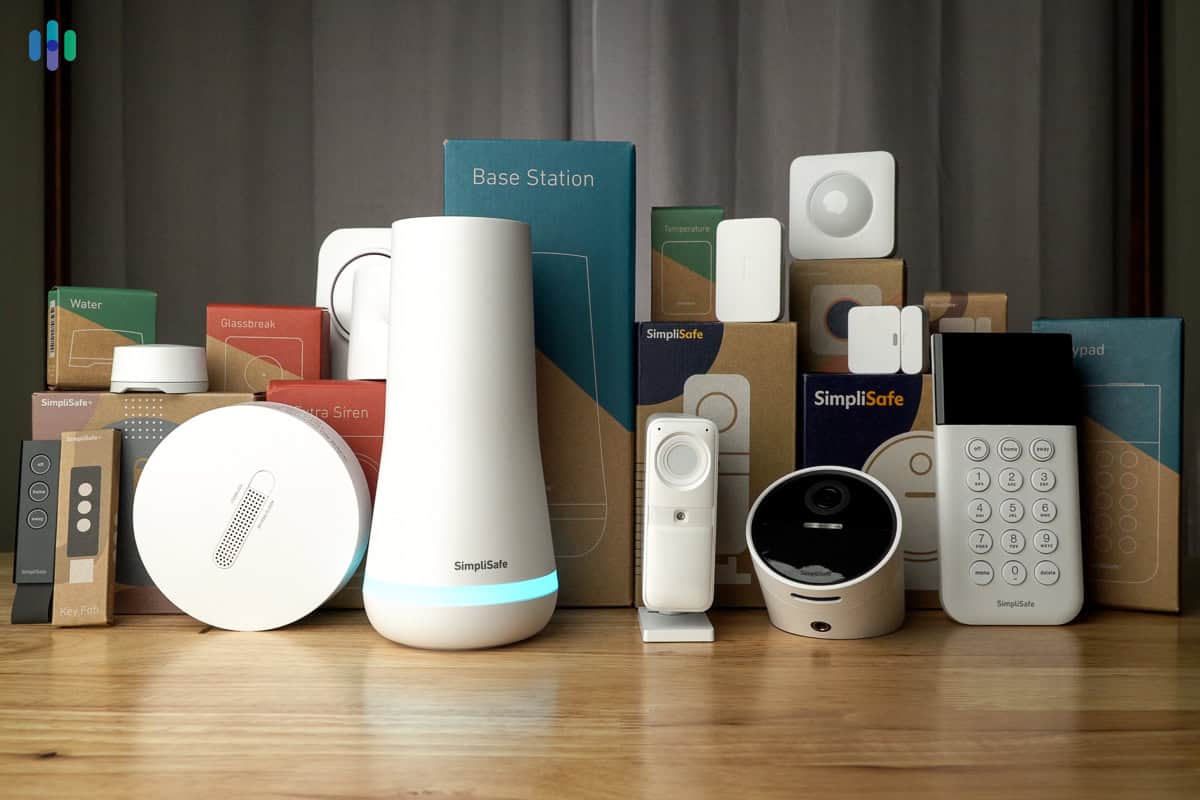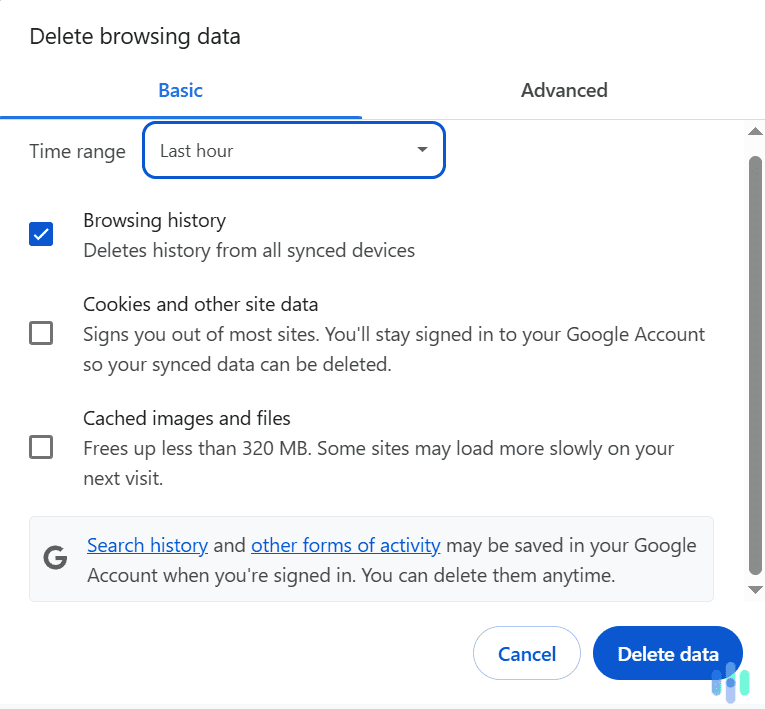Door sensors are a wonderful way to protect your home, relatively inexpensive and easy to install. Yet, they keep anyone from getting in without your knowledge. But, without an understanding of how they work you might miss some crucial maintenance steps every door sensor needs to stay functional.
That’s why today, our security experts are going over everything you need to know about door sensors. We’ve used door sensors from over 60 different companies so we know the ins and outs of using every type of door sensor on the market. Let’s go over what you need to know to keep your security system in tip-top shape.
How Door Sensors Figure Into Home Security
Door sensors will alert you if someone opens a door or window to your house. It is a necessary home security component, but a door sensor alone isn’t enough to secure your home. You’ll need to install a system that monitors for movement, glass breaking, and other signs of intrusion. We’ve tested the systems below, and in addition to door sensors, they each offer whole-home security:
How Do Door Sensors Work?
In the simplest terms, door sensors let you know when someone has opened a door. By far, the most common type of door sensor is the contact sensor, which uses a magnet to control a circuit that triggers an alert or alarm. A second type, however, involves depressing a switch to accomplish the same basic function.
We used to only use door sensors to protect the entrances of our homes. But, recently we’ve been getting smart devices in our homes and using door sensors on our interior doors to trigger our smart devices. They’re inexpensive and give us a ton of options. We set up our bedroom so when we walk in between 6 PM and 8 PM the lights turn on, and then the lights turn off after 11 PM if the door is closed.
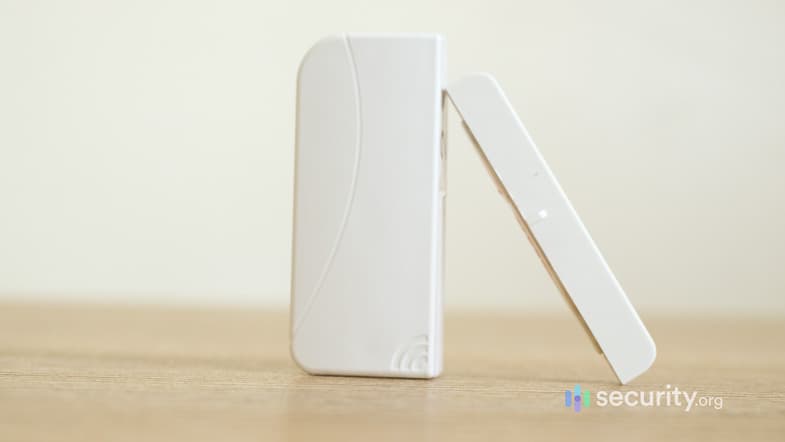
The Advantages of Door Sensors
When you use them for their intended purpose, door sensors have two important functions:
- Protect you from outsiders getting in: A door sensor lets you know if someone enters your house. You can also set it to emit an alarm that deters someone from entering.
- Protect people in your house from getting out: Also, you can use a door sensor to keep an eye on anyone who’s in the house. That makes sure your three-year-old doesn’t go for a neighborhood stroll when you’re not looking.
Because they work on such a simple principle, you can put door sensors to a whole host of other uses, from guarding desk drawers to making sure no one steals your outdoor grill.
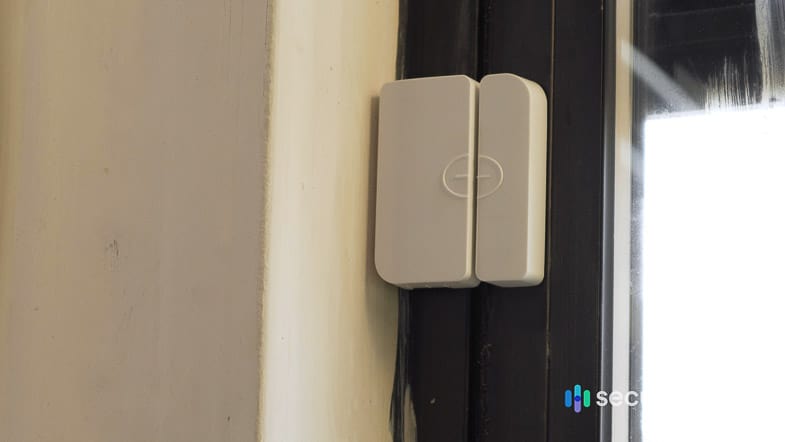
Start With Your Front Door
You can install a door sensor on essentially any kind of door you may have in your house. In general, it’s a good idea to install sensors on all of your ground-floor doors and windows, since those are the most vulnerable entry points. If, however, you’re just beginning to outfit your home with security and deciding where to begin, your front door makes a great starting point. Begin by installing a sensor there, then add more sensors in additional locations as your security system grows.
How Contact Sensors Work
Contact sensors, the heart of most door sensors, have two distinct parts: a reed switch and a magnet.
- Reed switch: A reed switch consists of two ferromagnetic blades inside a small glass capsule. Normally, a few microns separate the blades from one another. This means the circuit is open; in other words, electricity cannot flow freely through the switch.
- Magnet: When a magnet is applied to a reed switch, the two blades come together, closing the circuit and allowing electricity to flow. When the magnet is removed again, the circuit is broken.
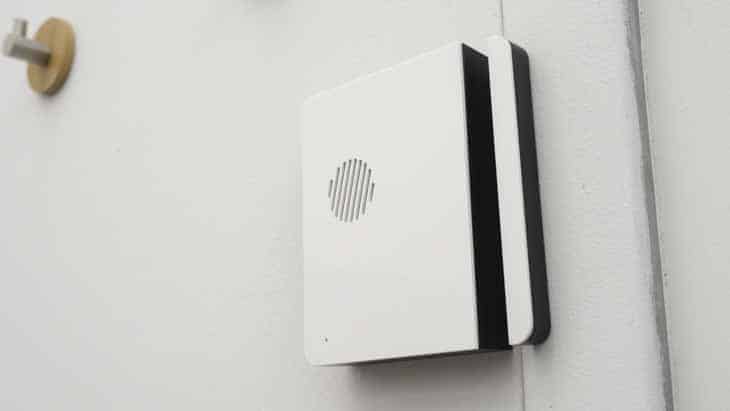
In the case of door sensors, normally you attach the reed switch to either the door frame or the door and then attach the magnet to the other side. You must align them so they are parallel to one another and close enough so the magnet can affect the reed switch. When someone opens the door, it breaks the circuit, sending a signal to a control box.
You can set that signal to send you an alert that someone has opened your door. On the other hand, you can set that signal to trigger an audible alarm that can frighten potential burglars away. We set up our front door sensor to send a signal while our back door sensor triggers an alarm. Friends and family are always going in and out of our front door so if we had an alarm there, it’d get annoying quick. But, we still get that added security at our back door.
FYI: Augustus Pope designed the first contact sensor door alarm in 1853. When someone opened the door, the magnet moved and the circuit opened, causing a large bell to vibrate.1
Types of Door Sensors
Essentially, you can use a contact sensor with any type of door. Here are the options:
Surface-mount: With the most common type of door sensor, you attach a magnet to the door or the frame and attach a reed switch to the opposite side.
Rollerball: In this setup, you install rollerball sensors in the recessed parts of door frames. Closing the door causes the hinged edge to depress the ball, closing the circuit.
Overhead (garage door) sensors: Roll-up style garage door sensors are similar to surface-mount sensors. However, garage doors include larger magnets, since you must keep the reed switch and magnet further apart to prevent false alarms. Learn more about garage doors and how to make them smart.
Pull-apart sensors: Typically, you use a pull-apart sensor on an emergency door that is meant to remain closed most of the time. The sensor itself is a magnet at the end of wire, inserted into a hollow tube. When the door opens, it pulls the magnet out of the tube so that closing the door by itself won’t close the circuit.
Recessed sensors: You place these sensors inside doors or windows by drilling holes and inserting them. That way, the sensors can’t be seen.
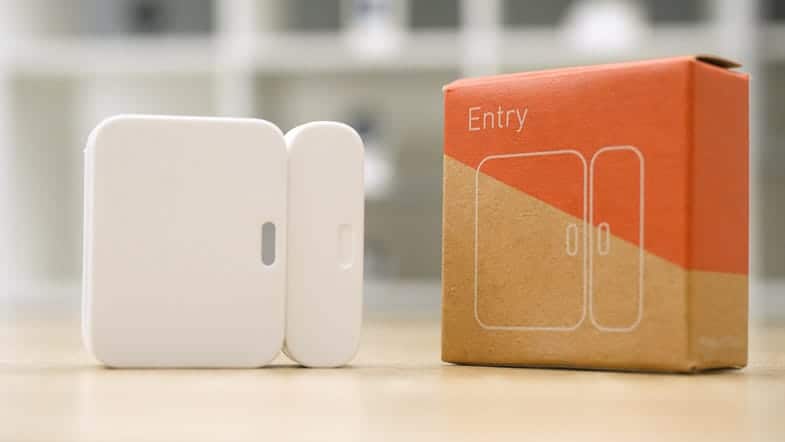
Door Contact Sensors and Access Control
In some cases, door sensors, particularly stand-alone sensors, only trigger local alarms, such as chimes or alarm sirens. Other brands, however, trigger text messages or mobile alerts. And in other cases, door sensors may be part of larger security systems. Opening a door that’s part of a security system can trigger video recording or alert a monitoring center to call the police. We like our door sensors to send us a push notification and trigger our nearest security camera to record at a minimum.
Other Uses for Door Sensors
In part because they are so simple, you can use door sensors in lots of different ways. You can rig them, for instance, to emit anything from gentle doorbell chimes to full-blown alarms. Door sensors aren’t just useful on entryways, though.
Use Them on Other Kinds of Doors
- Patio doors: You can install door sensors on patio doors to make sure your young kids can’t get to the pool.
- Cabinet doors: Install them on cabinet doors to keep older kids away from your liquor.
- Office doors: Maintain your privacy by installing door sensors on office doors.
- Medicine cabinets: Place them on medicine cabinets to discourage guests from snooping next time you throw a party.
Use Them on Any Surfaces That Can Be Pulled Apart
- Desk drawers: Set up your desk drawer to send you an alert if anyone opens it.
- Safes: Place sensors on your home safe for an added layer of protection.
- Mailboxes: Install a sensor on your mailbox to send you an alert when your mail arrives.
Place Them on Anything You Don’t Want Moved
- TVs: Don’t want your roommate changing the angle of your TV? Install a contact sensor on the bottom of the television.
- Outdoor furniture: Protect your outdoor furniture from being stolen by installing contact sensors in it.
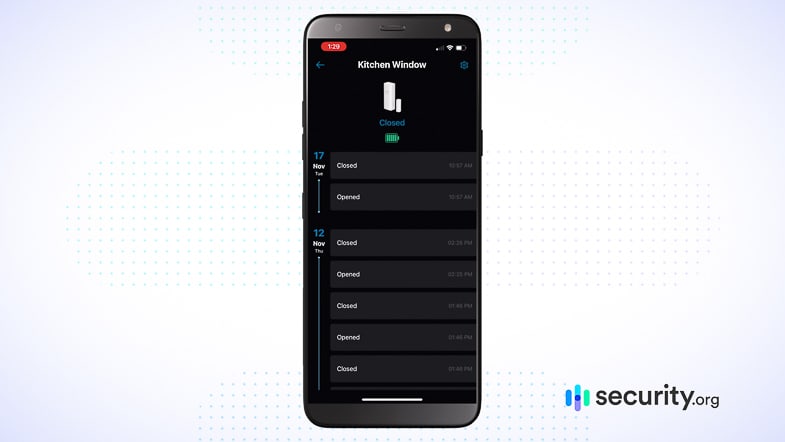
Door Sensors as Smart Triggers
Another handy way to use door sensors is as triggers in smart homes. A trigger connects one electronic activity, such as opening the smart lock on your front door, with another, like turning on the smart lights in your house. The possibilities for using door sensors as triggers are limited only by your imagination. Here are some of ways we use door sensors as smart triggers in our home:
- Closet lights: Install a sensor on a closet door that triggers the closet light to turn on every time you open it.
- Easy chairs: Install a sensor on your easy chair so that when you recline, it dims the lights and turns on your television.
- Showers: Install sensors on your shower doors so that every time you shower, the bathroom fan decreases overall moisture.
Installation
If you purchase wired sensors, sensors that connect to your home’s electricity directly, you may need professional installation. However, for battery-powered sensors that are part of a wireless security system, installation is pretty straightforward, usually. Sometimes, the two halves of the sensor must be screwed into the door and frame. More often, though, a strong adhesive can do the job. Many packages include these adhesives. Otherwise, the only real guidelines are to make sure the magnet and reed switch are parallel to one another and close enough for the magnet to close the reed switch circuit.
Follow these instructions for complete DIY installation:
- Install the necessary batteries in the device.
- Find a suitable location for the device.
- Mount both sides of the sensor so that when the door is closed, the two are parallel and close together.
- Set up alarming and disarming behaviors.
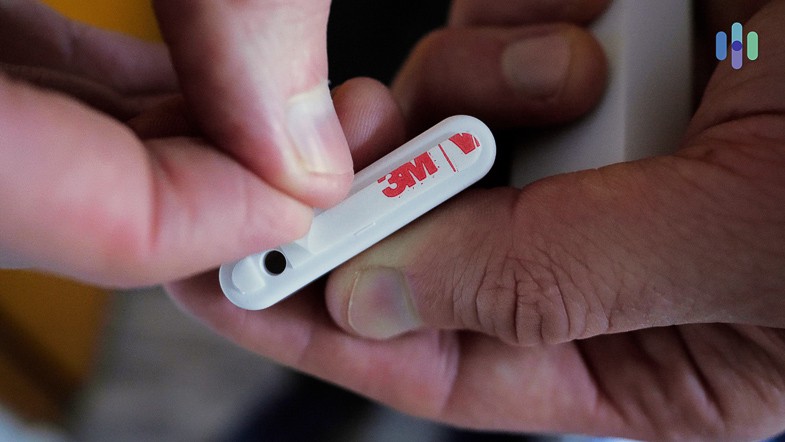
Where to Place Door Sensors
If you’re using door sensors as home security devices, you want them at all entry points. When we set up a new security system, we put door sensors on:
- The front door
- The back door
- Any other exterior doors
- Patio doors
- Basement doors
- Windows
However, as we mentioned earlier, you can place door sensors on any openings you want to keep closed, or any objects you want to keep in place, such as:
- Desk drawers
- Medicine cabinets
- Outdoor grills
- Home office doors
Finally, you can place them anywhere you’d like to create a triggering event, like:
- Closet doors
- Shower doors
- Easy chairs
- Refrigerators
- Furniture
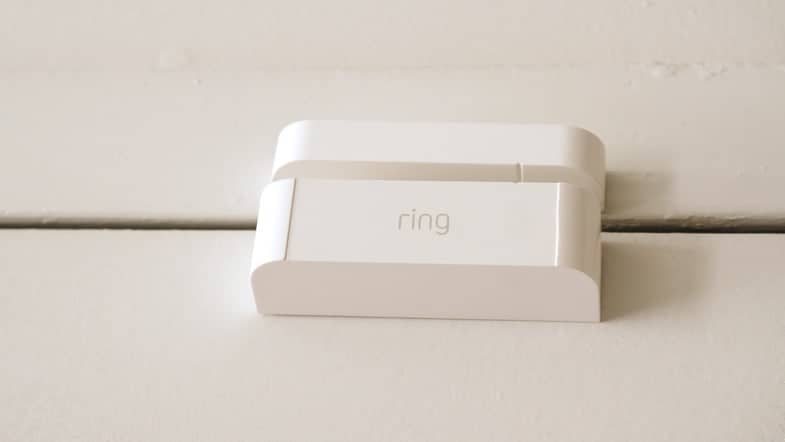
Door Sensor Maintenance
For the most part, door sensor maintenance means:
- Checking batteries: You should check the batteries every six months to make sure they are in good working order. All wireless sensors have batteries, of course, but most wired sensors also include backup batteries you should check, as dead batteries prevent the sensor from signaling alerts. Most sensors let you know if your battery is dying, but it’s a good idea to change batteries out every six months, just to be sure they are in working order.
- Checking for switch wear: All switches wear out eventually. Often, this generates false alarms. If you experience several false alarms, it might be time to replace your door sensor.
- Checking for weather effects: Weather changes can cause surfaces to expand and contract, and this can lead to false alarms,too. The magnet and reed switch can move closer or further away from one another, and the sensor can think the door is opening. In such cases, you may need to adjust the positioning of your sensors, or of the door itself.
- Checking for dust and debris: If dust and debris block the magnetic pull from connecting the two blades in the reed switch, your door sensor can’t get triggered. It will always think the door is open. Take a microfiber cloth and gently wipe away any dust and debris between the two parts of the door sensor to prevent buildup that can cause your sensor to malfunction.
Choosing the Right Door Sensor
There are a number of important factors you should consider when purchasing a door sensor.
- Price: First, think about the price. You can buy single sensors for as little as $15 or as much as $120. In general, though, the average price runs between $20 and $30. Prices can also vary depending on whether the sensor is part of a more complete security system. Some sensors, for instance, may be free when you sign up for a monitoring plan.
- Installation: Next, consider what’s involved in installing the sensor. Is it DIY or professional installation? If it’s DIY, do you need tools, or like the best DIY home security systems, does it come with self-adhesives?
- Mobile alerts: You should also think about how the sensor functions. Is it, for instance, a self-contained alarm system that lets you know when someone opens the door? Typically, the best smart home security systems send alerts to your smartphone or laptop, as well.

- Smart integration: In addition, your door sensor should work effectively with other door sensors. Ideally, it should communicate with other smart devices, like smart light bulbs and smart light switches.
- Alert options: Finally, what kind of programming flexibility does the sensor offer? Sure, the sensor may feature a warning siren. Better alarm systems, though, offer you alert choices when someone opens the door, from discreet silent alarms to pleasant doorbell chimes.
Garage Door Sensors
Most garage door sensors work on the same basic principle as other door sensors. That is, they use a reed switch and a magnet. However, because of the size of garage doors, the switch and magnet must be kept a few inches apart from one another in order to prevent false alarms. As a result, the magnets in these sensors must be significantly larger than the magnets you use on ordinary doors. However, some garage doors use what’s known as “pitch sensors.” This type of sensor keeps track of the door’s angle. If the door isn’t completely vertical, the sensor recognizes that the door is open and will alert you as such.
>> Related: Best Garage Security Systems
Window Sensors
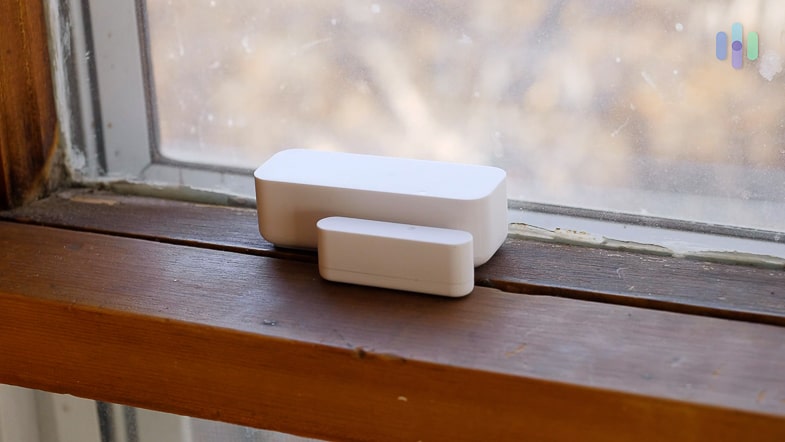
You can also use door sensors on windows; however, installation will vary depending on your window type. For windows that are raised from the bottom, like we have, you can install the magnet and reed switch on the window and sill. You can set up windows that crank open much like doors, with the magnet or switch on the frame and whichever piece you didn’t use on the window itself. In addition, you can buy sensors designed specifically to detect breaking glass. Some sensors use vibration to detect breaking glass. The most sophisticated sensors these days, however, use audio detection, since glass breaks at high frequencies.
Recap
Door sensors not only protect you from home invasion, but they can make sure your kids remain safe indoors. In addition, door sensors protect spaces within your home such as offices, drawers, and even medicine cabinets. Finally, door sensors make great smart home triggers. With such versatility, you can never have enough of these handy devices.
FAQs
We’re not done yet. Below, we’ve also got answers to some of the most frequently asked questions about door sensors.
-
How do automatic door sensors work?
Automatic door sensors work by sending signals that someone is approaching a door. These signals operate systems of slides and pulleys that cause the doors to open. In most cases, disturbances in the infrared fields trigger the signals.
-
How do you trick a door sensor?
In theory, you can trick a door sensor by placing a magnet against the door to keep the reed switch closed. The sensor will think the door is closed, even after you’ve opened it. However, you must know precisely where on the door the reed switch is located. In addition, many sensors detect subtle shifts in magnetic intensity and set off if someone tries to tamper with the sensor, so this approach won’t work with all door sensors.
-
What are door sensors?
Door sensors are devices that let you know when someone has opened a door. Most are a type of contact sensor that uses a reed switch and magnet. When the door is closed, the magnet keeps the reed switch circuit closed. When the door opens and the magnet is removed, the reed switch circuit opens, triggering an alert or alarm.
-
How do you test a door sensor?
To test a door sensor, first make sure all of your sensors are set to emit audible alarms. Then, go through your home, opening doors and noting any places where you don’t hear alarms or receive mobile notifications. Those sensors that remain silent are not functioning properly.
-
Are door sensors expensive?
No, door sensors are usually the least expensive products in a home security system, and we consider them one of the most cost-effective devices for protecting homes.






